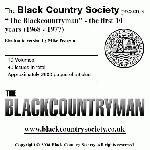
|
|||||||||||
| |||||||||||
|
|
|||||||||||
|
|||||||||||
|
|||||||||||
 Black Country Shop |
|
|||||||||||
|
|||||||||||

|
|||||||||||
|
28th
January
2004
Never Mind The Buzzards Many thanks to Gornal resident Steve Jones for filling in more gaps in our scant knowledge of bird life in the area. Steve contacted us after reading Andy Cashmore's reply to Paul and Sam's original enquiry about a possible wild sparrowhawk in their garden (click here), and writes: With regard to Andy Cashmore's article on the buzzards and gulls, it is my understanding that the sighting of buzzards in the area is due to better breeding conditions in the welsh border areas. The buzzard population in those areas is now thriving due to more eco friendly farming practices. The buzzard is a territorial bird and with numbers growing it is possible that the younger birds are being forced to roam further afield in search of their own territory. I myself have seen buzzards majestically soaring over Turners Hill woods,onto which my house overlooks. On one occasion my 10 year old son and I stood and watched for a good 15 minutes as a pair of sparrowhawks engaged in what can only be described as a dogfight over territory with one of these buzzards. This now brings up the subject of another bird of prey which is thriving in our area, namely the sparrowhawk. To my knowlege there are 2 breeding pairs in Turners Hill woods.These birds are thriving, in my opinion due to a high abundance of winged food in the area, namely the local pigeon racing faturnity. There are a large number of gulls and other sea birds which are to be seen in the area .I believe that these birds are most likley here due to the inland landfill sites, of which we have locally, It is possible that some of these birds where actually breed inland, and have never been near the coast. I think we are lucky in this area to have so much countryside and wildlife on our doorsteps,and hope it remains the same for future generations. Steve Jones Gornal resident. There are a large number of gulls and other sea birds to be seen in the area. I believe that these birds are most likely here due to the presence locally of inland landfill sites. It is possible that some of these birds actually breed inland, and have never been near the coast. I think we are lucky in this area to have so much countryside and wildlife on our doorsteps,and hope it remains the same for future generations. newsdesk@yampy.co.uk. --> |
|
|
|
|


